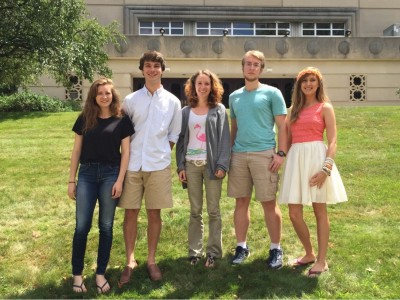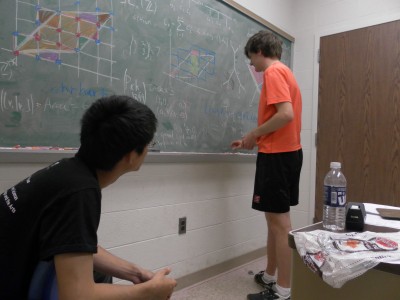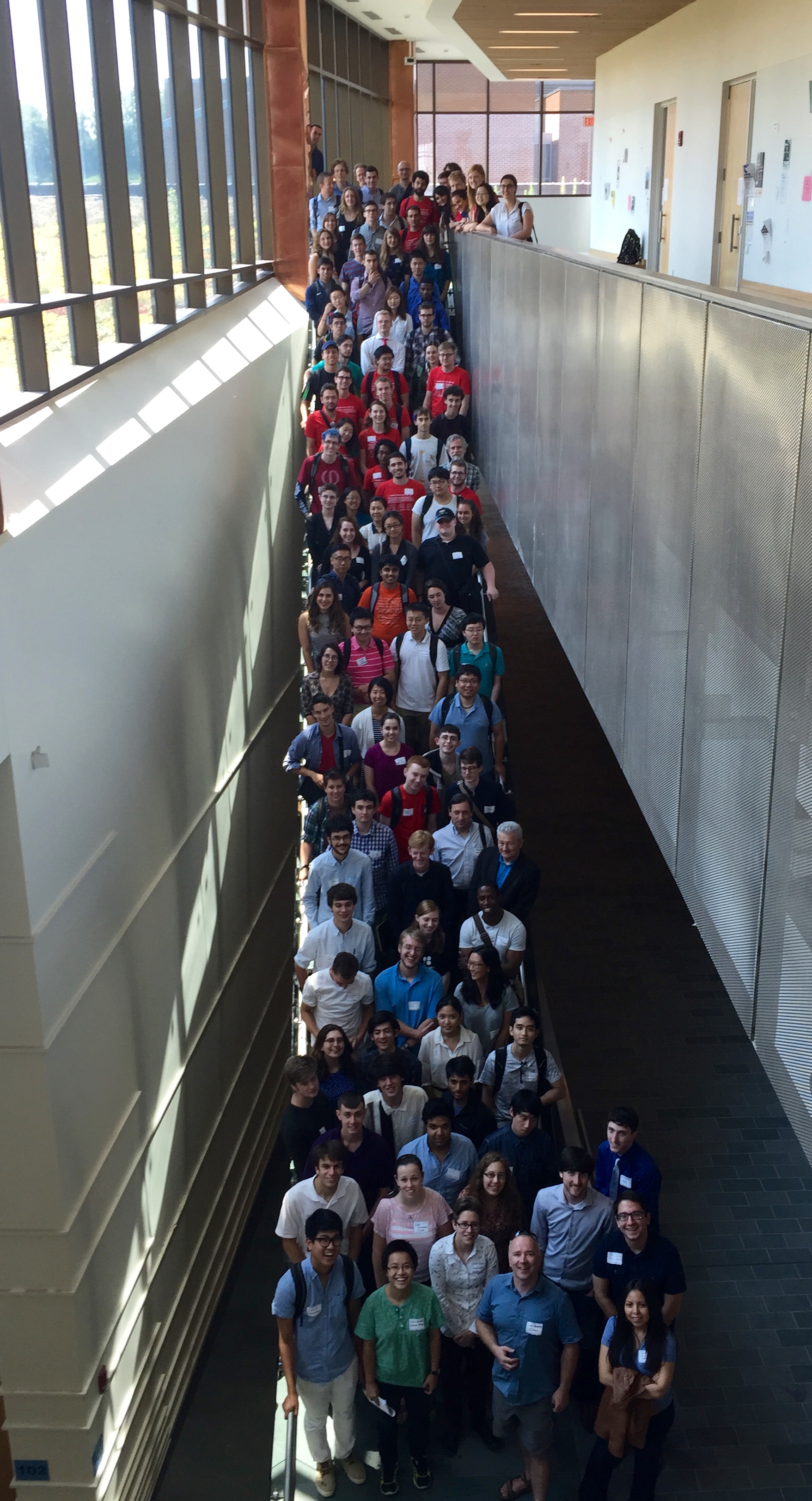Séminaire Lotharingien de Combinatoire (2021)
Sém. Lothar. Combin. 85B (2021), Art. 14, 12 pp.
Proceedings of the 33rd Conference on Formal Power
Series and Algebraic Combinatorics
Ben Drucker, Eli Garcia, Emily Gunawan, and Rose Silver
A box-ball system is a collection of discrete time states representing a permutation,
on which there is an action called a BBS move. After a finite number of BBS moves
the system decomposes into a collection of soliton states; these are weakly
increasing and invariant under BBS moves. The students proved that when this
collection of soliton states is a Young tableau or coincides with a partition of a type
described by Robinson-Schensted (RS), then it is an RS insertion tableau. They also
studied the number of steps required to reach this state.


